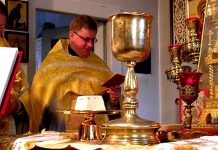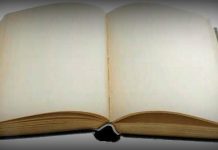This is a child’s bedtime prayer, written in 1941 by Rachel Field, with World War II on everyone’s mind. Mrs. Field died suddenly, and a few years later Elizabeth Orton Jones had the responsibility of illustrating it. She took that responsibility seriously, and a lovely job she made of it, too. The illustrations are wonderful.
Annis Duff (a terrific guide to children’s literature, and a friend of Jones) writes on the creation of one of those illustrations:
http://www.hbook.com/2013/02/authors-…”
This is a child’s bedtime prayer, written in 1941 by Rachel Field, with World War II on everyone’s mind. Mrs. Field died suddenly, and a few years later Elizabeth Orton Jones had the responsibility of illustrating it. She took that responsibility seriously, and a lovely job she made of it, too. The illustrations are wonderful.
Annis Duff (a terrific guide to children’s literature, and a friend of Jones) writes on the creation of one of those illustrations:
http://www.hbook.com/2013/02/authors-…” told us she was having a little difficulty in finding the right models to sit for the drawings of “Toys whose shapes I know” in Rachel Field’s Prayer For A Child. She had lived with the text and let the pictures grow in her mind until she knew precisely what she wanted: toys that had been really loved by some child, but were not so worn and tired that they’d lost their shape and color. She needed one woolly one, a good friend for sleeping with; one small one, the right size to fit into a child’s hands; one toy of wood or paper; and one “good old soul of a doll.”
Deirdre and Steven went upstairs, and if we’d been noticing particularly we might have thought they’d grown tired of our party. Presently they came down again, and with them came Prowlie, the second-generation teddy bear; Teddy Wear-wee, his inseparable companion; Salisbury, the small gray rabbit from England; the big Swedish wooden spoon known as the “tuvebon,” Steven’s favorite plaything from the time he could almost have been picked up in it; and Abigail, the Brown County pioneer doll handed on to Deirdre years ago by someone who had loved her dearly, and now Steven’s cherished friend and confidante. All of these were piled into Elizabeth’s lap. Elizabeth examined them gravely, asked a few questions about their ancestry (this out of understanding of their owners’ pride, not from concern with their social fitness), and then said, “Of course!” So they all went home for a long visit with “our Miss Jones.”
The next week the Duff children came down with measles, and the companions of the nursery began to be missed rather badly through the tedious feverish nights. There was much talk of how the toys were faring, whether Miss Jones remembered to put them to bed comfortably, and if they were homesick at all. But before the expected appeal came to have them brought home, there arrived a most enchanting letter with a beautiful colored picture of the toys sitting in Miss Jones’ studio chair, and a long account of the trip to Highland Park, of being tucked in for the night under warm blankets, and of Miss Jones’ pussy, Piley, who “makes a noise like a little washing-machine.”’
A modern look at the book is here, and Jones’ Caldecott acceptance speech for the book is here.
DD (age 3), after having been read the book, wanted an immediate re-read so she could say it as her bedtime prayer, and has continued to request it for this purpose throughout the week.
ME: 5/5
DD: 5/5
www.goodreads.com









